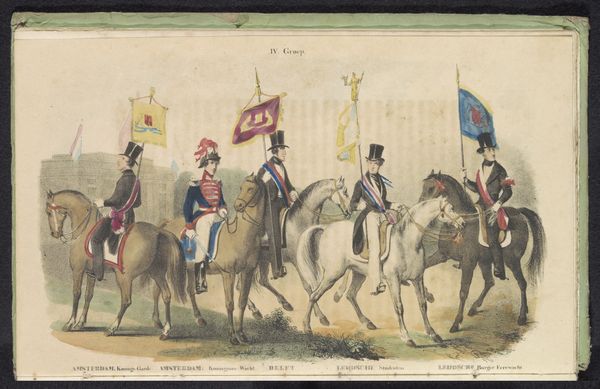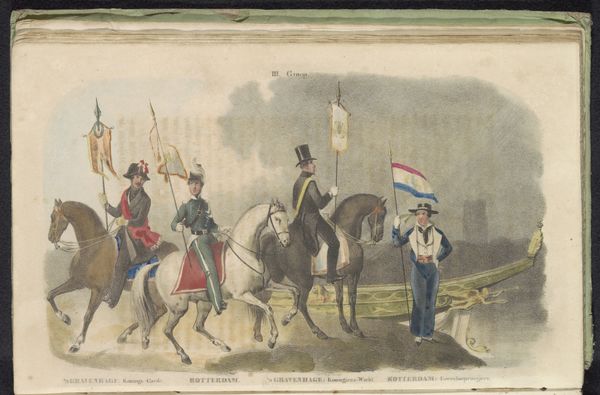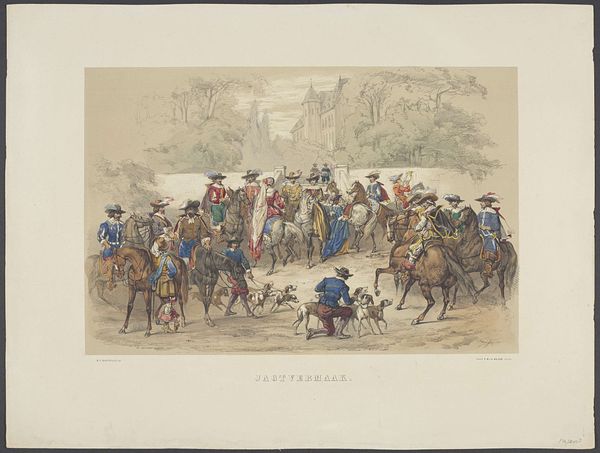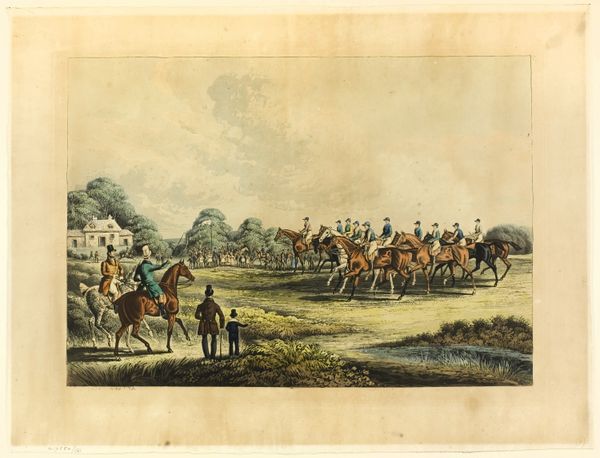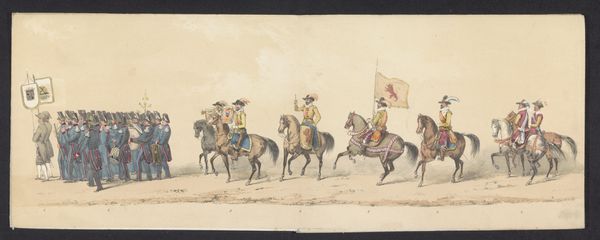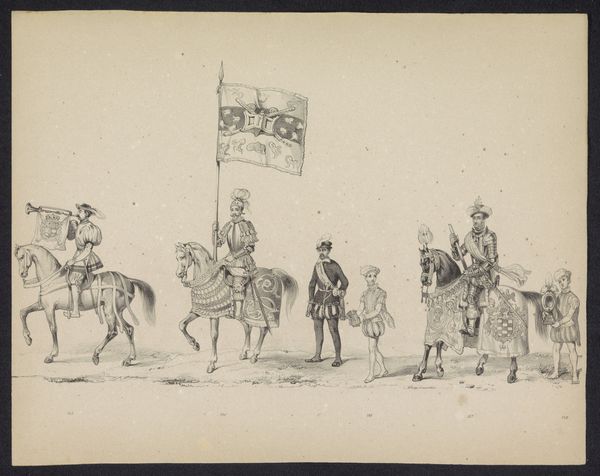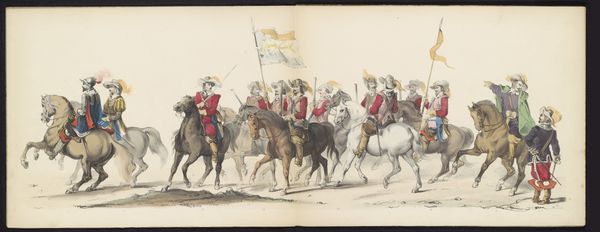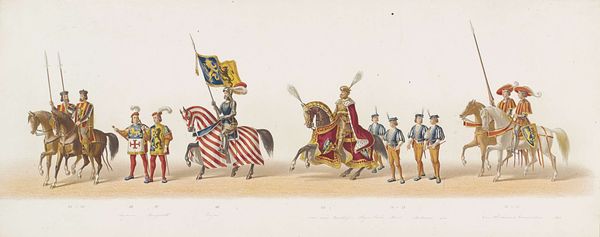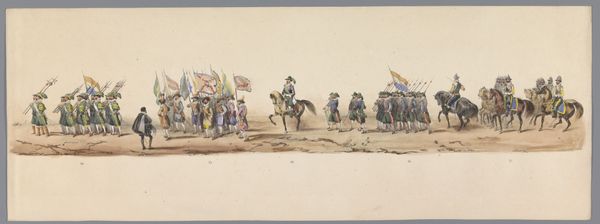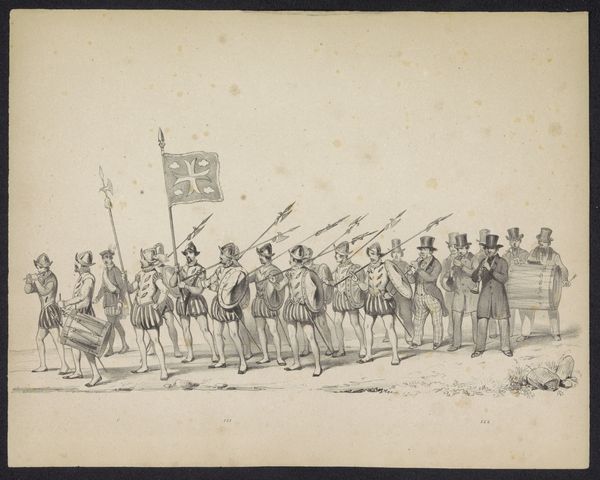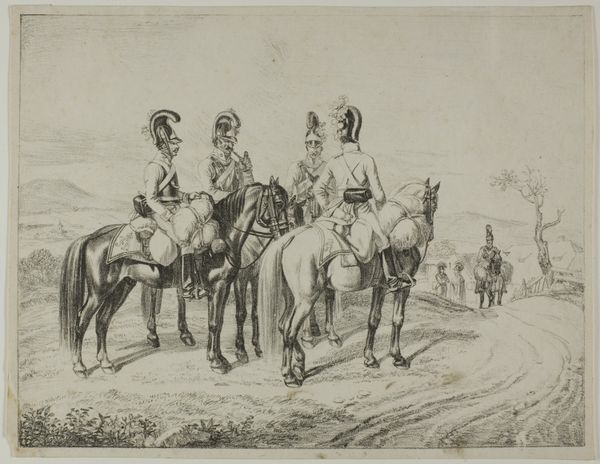
Kostumen en vaandels van de erewachten van Bergen op Zoom, Breda en 's-Hertogenbosch, 1840-1842 1840 - 1842
0:00
0:00
drawing, coloured-pencil, watercolor
#
drawing
#
coloured-pencil
#
water colours
#
watercolor
#
coloured pencil
#
romanticism
#
genre-painting
#
history-painting
Dimensions: height 144 mm, width 235 mm
Copyright: Rijks Museum: Open Domain
Editor: This coloured pencil and watercolour drawing from 1840-1842 depicts guards from different cities: Bergen op Zoom, Breda, and 's-Hertogenbosch, each mounted on horseback and bearing flags. There’s a formality to it, but something about the postures feels staged. What do you see when you look at it? Curator: I see a snapshot of 19th-century power structures meticulously rendered through the lens of Romanticism. But I am also wondering how this relates to national identity formation in the Netherlands. This drawing meticulously documents military regalia, and invites us to reflect on the narratives these symbols construct around power, belonging, and even exclusion. Who are these 'citizen soldiers' protecting, and from whom? Editor: That’s interesting. I hadn’t thought about the ‘who from’ part. It does seem to glorify a very specific vision of the nation. Are you suggesting there's an inherent bias in this type of historical documentation? Curator: Absolutely. This is not a neutral depiction; it's an active participant in shaping collective memory. Consider who isn’t represented. Where are the working classes, the marginalized communities? Are their stories actively suppressed or simply ignored? Editor: So, by analyzing what's included and excluded, we can gain a deeper understanding of the social and political context of the time? Curator: Precisely. We must use this work as a mirror reflecting not just the visible power structures, but also the shadowed realities of those living outside that frame. It is also critical to consider the function that “romanticizing” has in this power play, which acts as an embellishment of the ‘status quo.’ Editor: That definitely gives me a new perspective. I now see it as more than just a historical record. Curator: Indeed. It's a complex text reflecting its era, urging us to engage with history critically and intersectionally.
Comments
No comments
Be the first to comment and join the conversation on the ultimate creative platform.
